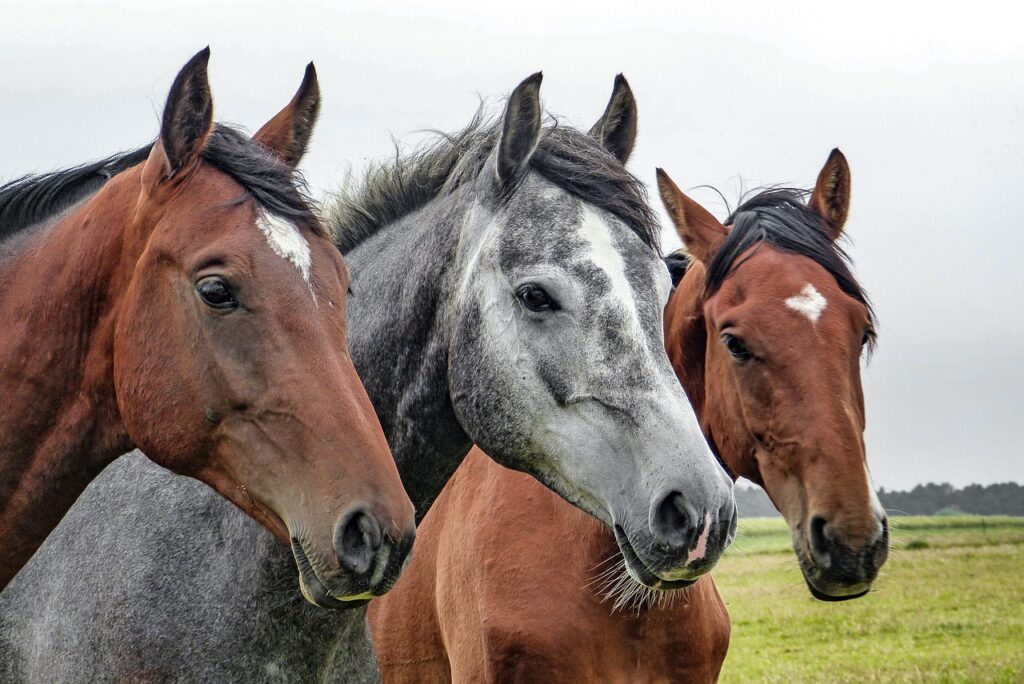Middleham Open Day: Good Friday 29th March 2024
Visit a range of yards in and around Middleham; Meet Shetland pony Little Alf; dog shows and plenty of trade stalls, food and drink and fun activities.
FULL INFORMATION COMING SOON

Middleham claims to be the smallest town in Yorkshire, but it is a giant in the world of horse racing with its 15 professional stables earning it the nickname ‘The Newmarket of the North’.
Horse breeding and training has been associated with the town since the 1730s and it has had a plethora of winners since, especially at the local courses of Ripon, Thirsk, Wetherby and York.
The stables and facilities in the town are second to none and visitors can get to meet the trainers and jockeys as well as see over 500 horses by taking a Middleham Racing Tour.
Where To Stay In and Around Middleham
Booking.com
Copyright Peter Wood and licensed for reuse under this Creative Commons Licence
Middleham Castle
LOCATION: Castle Hill, Middleham, North Yorkshire, DL8 4QG
WEBSITE: www.english-heritage.org.uk/visit/places/middleham-castle/
Other than the so-called ‘Sport of Kings’, Middleham is famous for actual monarchs.
Somewhere in the late 12th century, construction on the current castle began. The 1170s are likely when the massive tower or stronghold was constructed. The chapel in the north-east corner of the keep, which is no longer accessible, has capitals that were carved in the second half of the 12th century. These capitals have “waterleaf” ornamentation, a style of carving that was also utilised in other parts of Yorkshire at the time. The first part of the 13th century saw the addition of a tower with a chapel on its top floor to the keep’s east flank.
Similarities between Middleham and other northern castle keeps, such as Bamburgh and Bowes, suggest that the mason responsible may have been Richard Wolveston, who served Hugh du Puiset, Bishop of Durham.
The town’s magnificent Norman castle may be largely in ruins today, but during the late 15th century it was Richard III’s most treasured residence.
The Yorkist king spent much of his childhood at the castle after he and his brother Edward were adopted by Richard Neville, the Earl of Warwick.
Richard returned to the castle after he married the Earl’s youngest daughter Anne Neville in 1472 and their son, also named Edward, was born within its walls.
Middleham fell into obscurity after the king was killed at the Battle of Bosworth Field in 1485. Today its high walls still stand and are cared for by English Heritage, but much of the structure is ruined.
A great addition to the castle, though, is its oak viewing galley that provides superb views over the adjacent countryside.
The past two decades have seen a number of important and valuable historical artefacts found close to the castle and around the town itself.
The most prestigious of those is the so-called Middleham Jewel, which was found by a man named Ted Seaton buried under a bridal path in 1985.
The 15th century pendent is made from 68 grams of gold and includes a ten caret blue sapphire stone. It is engraved with a depiction of the crucifixion of Jesus Christ on one side and the Nativity on its rear.
It would have been worn as a necklace by a lady of importance and was purchased by the Yorkshire Museum for £2.5 million.
Another Middleham find in the museum is a gold ring with an inscription reading SOVEREYNLY. It is believed that it belong to a leading noble or a member of the court at Middleham Castle and was discovered using a metal detector in 1990.
Then there’s the Middleham Horde. Uncovered by another metal detector user during the summer of 1993, this is a mammoth collection of 5,099 silver coins that appear to have been buried during the English Civil War (1642 to 1651).
What’s unique about the horde is that many of the coins come from different countries. Most are English Elizabethan, but more than 200 are from Spanish America and Spanish Netherlands, suggesting whoever buried them was well travelled.
Activities In and Around Middleham
If after taking in all this history you simply want to go to a wacky place where the kids will be entertained for hours then visit Forbidden Corner. This unusual Middleham establishment is based in Tupgill Park and is a fantasy garden that covers four acres. It is made up of tunnels and follies with enough twists to keep both the body and the mind occupied.
It was created as a private garden in 1989, but was opened to the public five years later and its reputation has grown in the two decades since.
The hills around Middleham are perfect for cycling and walking. One of the most popular routes starts in the centre of the town before heading west along Middleham Low Moor to Naylor’s Hill and cutting down to Tupgill Park. From there the walk passes the ruinous Coverham Abbey before descending north-east to Middleham Castle.
It covers a distance of almost six miles and should take two to three hours to complete.
Despite its diminutive size, Middleham has a couple of inns which provide accommodation as well as a number of holiday cottages. There are also campsites to north, close to Leyburn.
